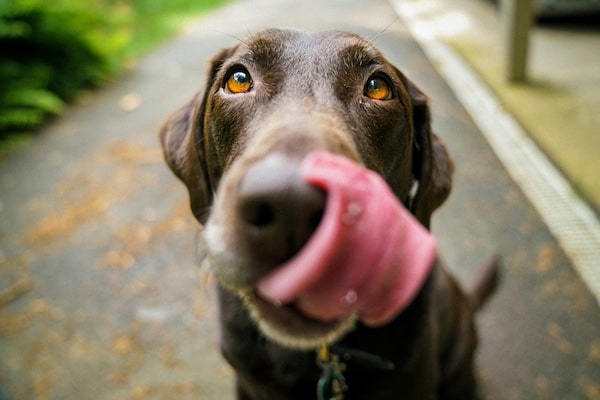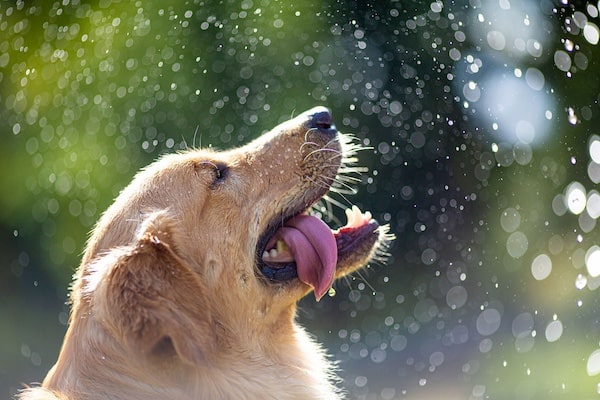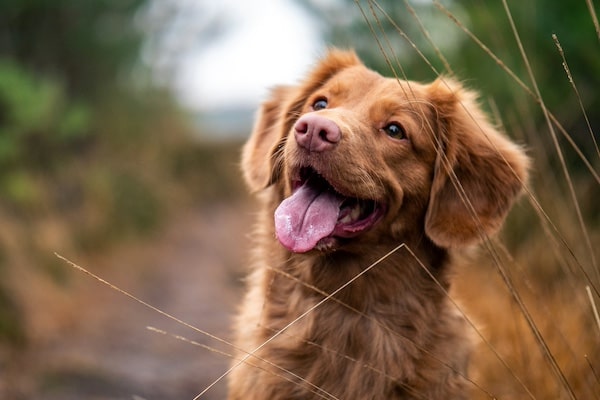Beginning the exploration of the German Shepherd Dog (GSD) is like uncovering a complex mosaic of loyalty, intelligence, and power. This guide aims to unravel the complexities of this noble breed, providing insights into its distinguished characteristics and behavior.
Renowned for their versatility, GSDs excel in roles that challenge both mind and body, making them indispensable companions in work and at home. As guardians of their families, they demonstrate an unwavering commitment to protection, yet their affectionate nature reveals a tender side to those they hold dear. Through expert advice and practical tips, this guide will equip potential owners with the knowledge to nurture a harmonious bond with these majestic animals, ensuring a fulfilling and mutually rewarding relationship.
German Shepherd Dog – Size & Life Expectancy
Height
24-26 inches (male)
22-24 inches (female)
Weight
65-90 pounds (male)
50-70 pounds (female)
Life Expectancy
12-14 years
About the German Shepherd Dog
The saga of the German Shepherd Dog begins in late 19th century Germany, a tale woven from the fabric of dedication to create the ideal working dog. Captain Max von Stephanitz, heralded as the father of the breed, embarked on a mission to develop a dog that embodied unmatched intelligence, strength, and versatility. By selectively breeding local herding dogs from various German regions, von Stephanitz’s vision materialized in the form of the German Shepherd. Originally tasked with herding and guarding sheep, the GSD’s role swiftly evolved, showcasing its adaptability and keen intelligence across myriad tasks.
A Versatile Companion
As the world entered the 20th century, the German Shepherd’s roles expanded beyond pastoral duties, taking center stage in military and police work, search and rescue missions, and as trusted service dogs. The breed’s ability to learn quickly and adapt to new challenges made it an invaluable asset in both World Wars, serving as a Red Cross dog, messenger, and guard. The GSD’s heroism and loyalty did not go unnoticed, capturing the hearts and imaginations of people worldwide.
The Modern German Shepherd
Today, the German Shepherd stands as one of the most popular and recognized dog breeds globally. Its status is a testament to the breed’s remarkable adaptability and enduring appeal. The German Shepherd’s popularity is not confined to its prowess in work and service; it also shines as a devoted family member, known for its protective yet gentle nature towards those it considers part of its pack.
The typical owners of German Shepherds are as diverse as the breed’s capabilities. From active individuals looking for a companion in adventure to families seeking a loyal guardian, the GSD’s appeal transcends boundaries. Its intelligence and trainability make it a favored choice for professional trainers and handlers in security, law enforcement, and assistance roles.
Despite its widespread popularity, owning a German Shepherd comes with a set of responsibilities that require commitment and understanding. These dogs thrive on challenge and engagement, necessitating regular physical exercise and mental stimulation. Their strong protective instincts and self-confidence call for early socialization and consistent, positive training to ensure they develop into well-adjusted adults.
Conclusion
The German Shepherd Dog embodies a unique blend of attributes — courage, loyalty, intelligence, and versatility — that has secured its place not just in the annals of canine history but in the hearts of millions around the globe. From its origins in the fields of Germany to its status as a beloved companion and unparalleled working dog, the GSD’s journey is a testament to the breed’s extraordinary nature. For potential owners, the decision to welcome a German Shepherd into their lives is the beginning of a remarkable partnership, built on mutual respect and understanding. The legacy of the German Shepherd Dog continues to evolve, as it adapts to the changing needs of society while maintaining the noble characteristics that have made it an iconic breed.
Traits & Characteristics of the German Shepherd Dog
- Intelligent and quick to learn
- Loyal and protective of their family
- High energy and requires regular exercise
- Strong and agile with a muscular build
- Versatile, excelling in various roles such as service, work, and companionship
- Courageous and confident
- Affectionate with family, but can be wary of strangers
Owning a German Shepherd Dog
Welcoming a German Shepherd Dog into your life marks the beginning of a remarkable journey filled with companionship, loyalty, and adventure. Esteemed for their intelligence and versatility, GSDs are not just pets but lifelong companions who thrive with care and understanding. To ensure a happy and healthy life for your GSD, it’s crucial to familiarize yourself with their specific needs. This guide delves into essential aspects of caring for a German Shepherd, from health to training, providing valuable insights for prospective owners.
Health
The overall health of a German Shepherd Dog is robust, but like any breed, they are prone to certain conditions. Common health issues include hip and elbow dysplasia, degenerative myelopathy, and gastrointestinal problems. Preventive care, such as regular check-ups with a veterinarian, can significantly mitigate these risks. A proactive approach to health includes maintaining a healthy weight, providing joint supplements, and early screening for genetic disorders. Ensuring your GSD receives appropriate vaccinations and parasite control is also vital for their well-being.
Exercise
German Shepherds are high-energy dogs that require regular, vigorous exercise to maintain their physical and mental health. They thrive on activities such as running, hiking, and agility training. A daily routine should include at least an hour of exercise, split between walks, playtime, and training sessions. Engaging in interactive games like fetch or participating in dog sports can help channel their energy positively. Remember, a well-exercised GSD is more content, well-behaved, and less prone to developing destructive behaviors.
Grooming
The coat of a German Shepherd Dog is dense, with a thick undercoat, requiring regular grooming to maintain its condition and reduce shedding. Weekly brushing helps to remove loose fur and distribute natural oils throughout their coat, keeping it healthy and shiny. During shedding seasons, more frequent grooming may be necessary to manage the increased hair loss. Bathing should be done sparingly, only when necessary, to avoid stripping the coat of its natural oils. Regular nail trims, ear cleanings, and dental care are also essential to prevent common health issues.
Nutrition
Feeding your German Shepherd Dog a balanced and nutritious diet is crucial for their health and well-being. High-quality commercial dog food, rich in protein and low in fillers, supports their active lifestyle and promotes muscle development. Avoid foods containing harmful additives or foods that are toxic to dogs, such as chocolate, grapes, and onions. Portion control and a consistent feeding schedule help prevent obesity, a growing concern in the breed. Consulting with a veterinarian can provide personalized nutritional advice tailored to your dog’s needs.
Training
Training a German Shepherd Dog is a rewarding experience, thanks to their intelligence and eagerness to learn. Basic obedience training should start early, with puppy classes offering an excellent foundation. Socialization is also critical, exposing your GSD to various people, animals, and environments to foster a well-adjusted temperament. Positive reinforcement methods strengthen the bond between you and your dog, ensuring training remains both effective and enjoyable. Remember, consistency and patience are key. As your German Shepherd grows, advanced training or participation in dog sports can provide ongoing mental stimulation and physical exercise.
Embracing these aspects of care ensures a fulfilling life for both you and your German Shepherd Dog, fostering a deep bond rooted in mutual respect and understanding.
The German Shepherd Dog Standard
The breed standard of the German Shepherd Dog embodies an image of elegance, power, and agility, serving as the pinnacle of canine excellence. This standard, recognized and upheld by national and international canine organizations, outlines the ideal characteristics that GSDs are judged against in shows, highlighting their unique blend of form and function.
At the heart of the breed standard lies the GSD’s distinct appearance: a medium to large-sized dog with a muscular build, exuding strength without bulkiness. The ideal GSD possesses a noble, elongated outline with harmonious proportions, ensuring agility and endurance. A defining feature is the slightly sloping backline, blending into a bushy tail that hangs in a slight curve.
The head of the GSD is proportionate to the body, exuding intelligence and confidence. A marked forehead, with a clear stop, transitions into a long, straight muzzle. Medium-sized, almond-shaped eyes offer a keen, attentive expression, mirroring the dog’s alert and watchful nature. Ears are medium-sized, standing erect and open at the front, further accentuating the breed’s attentive demeanor.
Coat and color also play a crucial role in the breed standard. The GSD boasts a double coat – a dense outer coat with straight hair that lies close to the body, and a thick undercoat for insulation. Color variations include shades of black and tan, sable, and all black, with patterns that enhance the dog’s striking presence.
Movement is another critical aspect, where the GSD’s gait is smooth, efficient, and covers ground with minimal effort. The ideal GSD moves with a trot that is rhythmic and floating, showcasing the breed’s inherent balance and power.
Temperament is integral to the breed standard, emphasizing the GSD’s character as confident, courageous, and keenly intelligent. A well-bred GSD displays a calm demeanor, with a steadfast loyalty to its handler. This breed is renowned for its versatility, excelling in tasks that require mental acuity and physical prowess, from service roles to companionship.
In essence, the breed standard for the German Shepherd Dog is a testament to the breed’s illustrious heritage and enduring qualities. It serves not only as a blueprint for breeders and judges but as a guide for all who cherish these noble animals, ensuring the preservation of their esteemed traits for generations to come.
German Shepherd Dog – FAQ
Welcome to the comprehensive FAQ section dedicated to the German Shepherd Dog, a beloved breed known for its intelligence, loyalty, and versatility. Whether you’re a potential owner, a new guardian, or simply an enthusiast, this guide aims to address your most pressing questions and curiosities about these magnificent animals.
Alternatives to a German Shepherd Dog
In the canine world, several breeds share similarities with the esteemed German Shepherd Dog in terms of size, traits, and characteristics. The Belgian Malinois, often mistaken for its German counterpart, mirrors the German Shepherd in intelligence, loyalty, and versatility. Renowned for their work in police and military roles, Belgian Malinois are just as eager to learn and serve.
Another breed that shares a comparable stature and temperament is the Dutch Shepherd. Known for their brindle coat, Dutch Shepherds excel in agility, obedience, and herding, showcasing a similar blend of intelligence and athleticism.
The Australian Shepherd, despite its name, also aligns closely with the German Shepherd in terms of energy levels and work ethic. These dogs thrive in active environments, where their herding instincts and intelligence can be put to good use.
Lastly, the Siberian Husky, with its distinctive appearance and size, shares the German Shepherd’s need for regular exercise and mental stimulation, although it tends to be more independent in nature.
Each of these breeds, like the German Shepherd, demands engagement, training, and affection. They fit best with owners who can provide an active lifestyle, structure, and plenty of mental challenges, ensuring a fulfilled and harmonious relationship.





